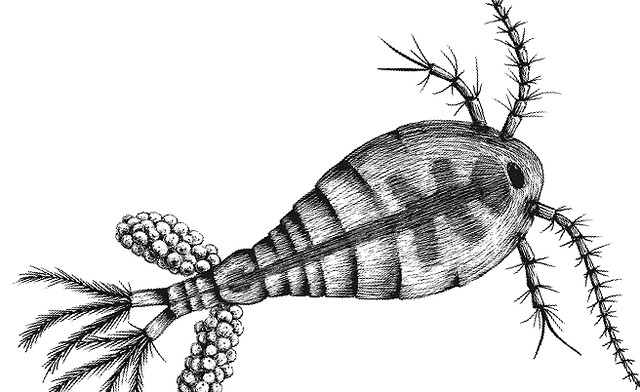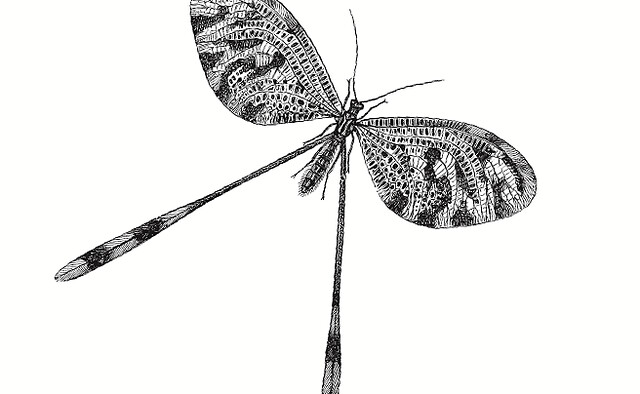Anthropoda

Water Strider
Gerridae Family


Sorry, there is no photo available. If you have one, please submit
here
.
EXTANT | 3 POINTS
Play: MOVE of 1.
The water strider’s long and slender legs, with several thousand hairs, enable them to walk on water.
warm
Graphic by AMNH/M.Stanleywww.amnh.org/
Gerridae is a family of true bugs in the order Hemiptera, commonly known as water striders, water bugs,magic bugs, pond skaters, skaters, skimmers, water scooters, water skaters, water skeeters, water skimmers, water skippers, water spiders, or Jesus bugs. Consistent with the classification of Gerridae as true bugs, gerrids have a mouthpart evolved for piercing and […] read more

Northern Krill
Meganyctiphanes norvegica


Sorry, there is no photo available. If you have one, please submit
here
.
3 POINTS
Play: Meganyctiphanes norvegica has a MOVE of 1. Should be played adjacent to a PLANKTON card.
cold, cool, warm
Graphic by O'Reillyanimals.oreilly.com/
Northern krill, Meganyctiphanes norvegica, is a species of krill that lives in the North Atlantic Ocean. It is an important component of the zooplankton, providing food for whales, fish and birds. (In the Southern Ocean, Antarctic krill Euphausia superba fills a similar role.) M. norvegica is the only species recognised in the genus Meganyctiphanes,[1] although […] read more

Garden Snail
Helix aspersa


Sorry, there is no photo available. If you have one, please submit
here
.
4 POINTS
Play: Helix aspersa has a MOVE of 1
Fact: Helix aspersa has a life span of 5-10 years
cool, warm
Graphic by O'Reillyanimals.oreilly.com/
Cornu aspersum, known by the common name garden snail, is a species of land snail. As such it is aterrestrial pulmonate gastropod mollusc in the family Helicidae, which include the most commonly familiar land snails. Of all terrestrial molluscs, this species may well be the most widely known. In English texts it was classified under […] read more

Zooplankton
Copepoda subclass


Sorry, there is no photo available. If you have one, please submit
here
.
2 POINTS
Play: Copepoda has a MOVE of 1
Fact: Copepoda live both in the sea and in freshwater habitats
cold, cool, warm
Graphic by O'Reillyanimals.oreilly.com/
Copepods (/ˈkoʊpɪpɒd/; meaning “oar-feet”) are a group of small crustaceans found in the sea and nearly everyfreshwater habitat. Some species are planktonic (drifting in sea waters), some are benthic (living on the ocean floor), and some continental species may live in limno-terrestrial habitats and other wet terrestrial places, such as swamps, under leaf fall in […] read more

Thread-winged Antlion
Nemoptera sinuata


Sorry, there is no photo available. If you have one, please submit
here
.
2 POINTS
Play: Nemoptera sinuata has a MOVE of 2
Fact: Nemoptera sinuata undergoes a complete metamorphosis with egg, larval, pupal, and winged adult stages.
cool, warm, hot
Graphic by O'Reillyanimals.oreilly.com/
Spoonwings or Nemopteridae are a family of neuropteran insects. They are also called Thread-winged Antlions. Their flight is delicate and they have a circling flight to avoid walls when they are trapped indoors. The long streamer is conspicuous when the insects are flying and these are the elongated and spatulate hindwings. They are found in […] read more

Moss Mite
Oribatida order


Sorry, there is no photo available. If you have one, please submit
here
.
2 POINTS
Play: Oribatida has a MOVE of 1.
Fact: Orbatid mites help to enrich soil by breaking down organic matter.
warm, hot
Graphic by Kyle McQueenkylemcqueen.net/
Diversity and systematics Lime nail galls on Tilia × europaea, caused by the mite Eriophyes tiliae Mites are among the most diverse and successful of all the invertebrate groups. They have exploited an incredible array of habitats, and because of their small size (most are microscopic) go largely unnoticed. Many live freely in the soil […] read more